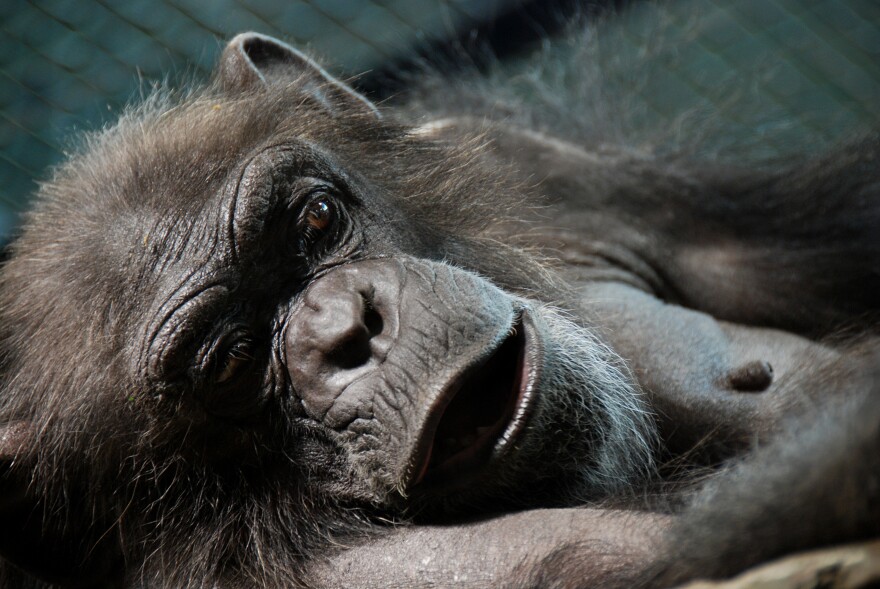One of the most enduring questions in science is how did we become human. Fossil bones of our ancestors tell part of the story. But researchers at Kent State University have discovered another piece of the puzzle by comparing the brains of humans with other primates.
In this week’s Exploradio, WKSU’s Jeff St.Clair looks at the neurochemical changes in our distant past that became the turning point in human evolution.
Youngsters at a local preschool are getting ready for recess, and despite the chaos, it’s surprisingly efficient. They’re working together to clean up. It’s the kind of behavior you don’t see in other primates, according to Kent State University anthropologist Mary Ann Raghanti.
“Cooperation is something that’s very uniquely human. We start cooperating by the time we’re 1 year old. This doesn’t happen in other ape species, so it’s hard wired.”
Raghanti believes that early in our history something switched-on in our brains that sent us on a different path than our closest relatives, and it wasn’t our smarts.
“Our brain was the size of the chimpanzee. We hadn’t expanded the cerebral cortex yet," says Raghanti, "so whatever it was that changed our personality occurred without that cerebral cortex.”
Raghanti has been dissecting the brains of humans, chimpanzees and other primates over the past decade to see what could account for the differences in our behavior. She looked at the chemicals that trigger our thoughts and actions – the neurotransmitters – and where they’re active in the brain. It was a lot of work counting all the neural connections.
"We very laboriously section every single brain into very thin sections, and then we stain it, and put it under the microscope and we have special software where we can quantify the number of axons which gives us a measure of the enervation.”
She didn’t see many differences, until she got to the part of the brain called the striatum.
Human reward system
Nestled deep in the brain, the striatum plays an important part in decision-making and is home to the all-important reward system, the same system that gets hi-jacked by drug addiction.
But Raghanti found that in early human ancestors that reward system developed for another purpose.
“Our reward system gets triggered by helping other individuals,” says Raghanti.

That pathway is missing in apes. Instead, Raghanti found they’re hard-wired for aggression.
Her finding was the missing link for Kent State’s Owen Lovejoy, who’s been puzzling over the question of what made us human since he was part of the team that discovered Lucy back in the 70’s. That skeleton from 3.4 million years ago showed an upright species well on its way to becoming human.
Lovejoy says if evolution is survival of the fittest, it doesn’t make sense if instead of competing, you’re helping each other, which is what humans do.
“Why do you cooperate with other people unless it gives you more offspring? I’ve never really understood that on a basic selection basis, until Mary Ann made this discovery.”
For Lovejoy, all the pieces come together knowing that the human brain is hard-wired for teamwork.
The turning point in human evolution
Why did our ancestors walk upright?
It wasn’t to see over the tall grass. It didn’t make us faster. It made it harder to climb trees. But it did allow us to do one thing very well: Carry stuff.
Lovejoy says male provisioning, or bringing home the bacon, fed that positive feedback loop by rewarding cooperation over aggression.
“If a female chooses a male that provisions her, she’s going to have more offspring who are going to be more likely to survive than those of other females who simply choose males that compete for access to her.”
This led to selection of males that could get along with other males and Lovejoy says, the development of the extended family.
“Hominids have a form of social structure that no other primate has," says Lovejoy. "We have something we call social monogamy.”
Lovejoy believes that committed couples working together are at the root of human evolution.
Friendly canines
Further proof, he says, is found in our smile.

Lovejoy says that as we began to walk and cooperate, we also lost our fangs.
Male chimpanzees and other primates have scary-looking canines which they flash as a sign of aggression. Humans kept that action but Lovejoy says its meaning switched to show, ‘Look, I don’t have canines; I’m friendly.’
“The smile is one of those interesting things that completely inverts in evolution,” says Lovejoy.
Chimpanzees actually show their bottom teeth when they’re happy. So, he says, compared to our closest relatives, our smile is upside down.








